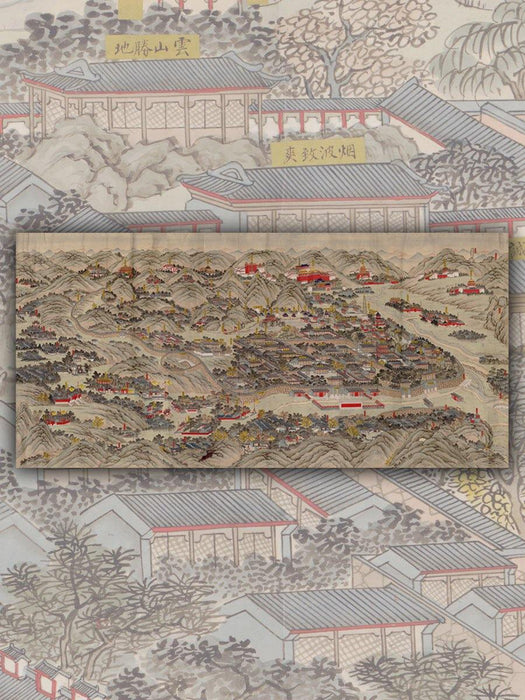
Illustrated Map of Rehe Palace (Chengdé), China - Art Print
Envío inmediato
Fabricamos con cariño; pide este producto hoy para tenerlo entre el Lunes 22 de Diciembre y Jueves 25 de Diciembre.
Fabricamos con cariño
Pide este producto hoy para tenerlo entre el Lunes 22 de Diciembre y Lunes 29 de Diciembre.
One of our favorite illustrated maps. It is made as a "bird's flight" over the Chengdé area, formerly called Rehe by its province, which was annexed to the current one.
- Size : 110x52cm
- Printing : Coldpress 310gsm paper. semi-textured, specialized for art reproduction.
- Original technique : Chinese ink and water-based inks.
- Shipping : Worldwide rolled in a Mappin box.
- Reference photo, this version does NOT include a frame.
History of the place:
In 1703, Chengde was chosen by the Kangxi Emperor as the location of his summer residence. Built in the 18th century , the Residence Chengde Mountain was used by the Yongzheng and Qianlong Emperors . During that period, Chendge became the political center of the Chinese empire.
The Chengde Mountain Residence contains the largest imperial garden in the world. In 1994 the Unesco included it in the list of places that are part of the World Heritage.
Its construction took place over 89 years , between 1703 and 1792. It occupies a total area of 5.6 km², almost half of the entire urban area of Chengde. It is a vast complex of palaces and administrative and ceremonial buildings, including temples made in various architectural styles, as well as imperial gardens. In addition, the mountain residence is a historical vestige about the end of society feudal in China.
The Kangxi, Qianlong, and Jiaqing emperors spent long months in this residence in order to escape the summer heat of Beijing. The palace area as well as the southern part have a design reminiscent of the Forbidden City. It consists of two parts: a court at the front, where the emperor received high-ranking officials, nobles, members of ethnic minorities and foreign envoys; and a room area at the back where the imperial family resided.










